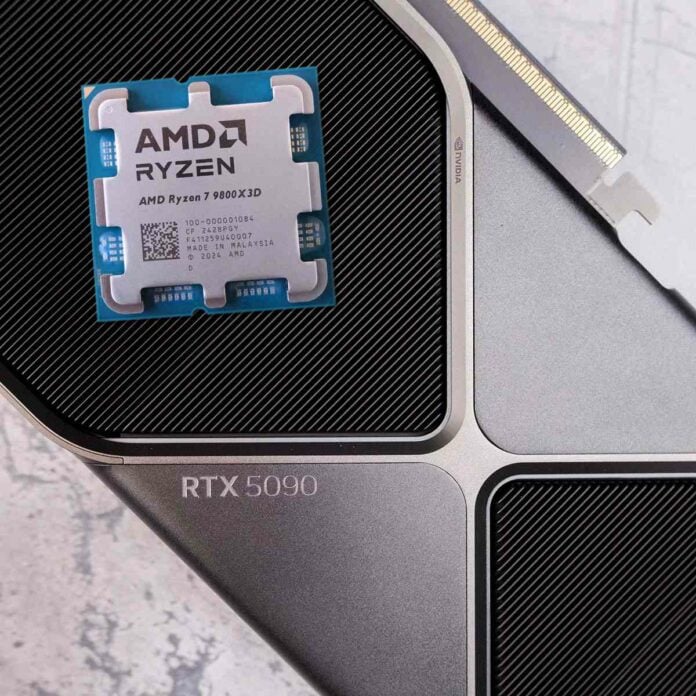There’s no doubt in my mind the finest consumer GPU is the GeForce RTX 5090. Armed with the latest Blackwell architecture and blowing away the competition through a mix of brute force and fps magic courtesy of Multi Frame Generation, the two sticking points are price and availability. You’ll do well to get one for less than $2,500 / £2,500 any time soon. Nevertheless, this is the stuff of dreams, and if you are lucky enough to be building an ultimate PC, which CPU do you choose?
I’d have to go with an X3D model from AMD; rival Intel has no such caching technology even on the latest Arrow Lake CPUs. Club386 platforms all accommodate a trusty Ryzen 9 7950X3D that offers a great mix of productivity and gaming. Yet I have something on the shelf with the capability of pushing gaming performance even higher, particularly at lower resolutions. I’m looking at you, Ryzen 7 9800X3D. Using the latest Zen 5 smarts, I’m all set to examine whether it’s a better gaming fit for that ultimate fragging PC.
Performance
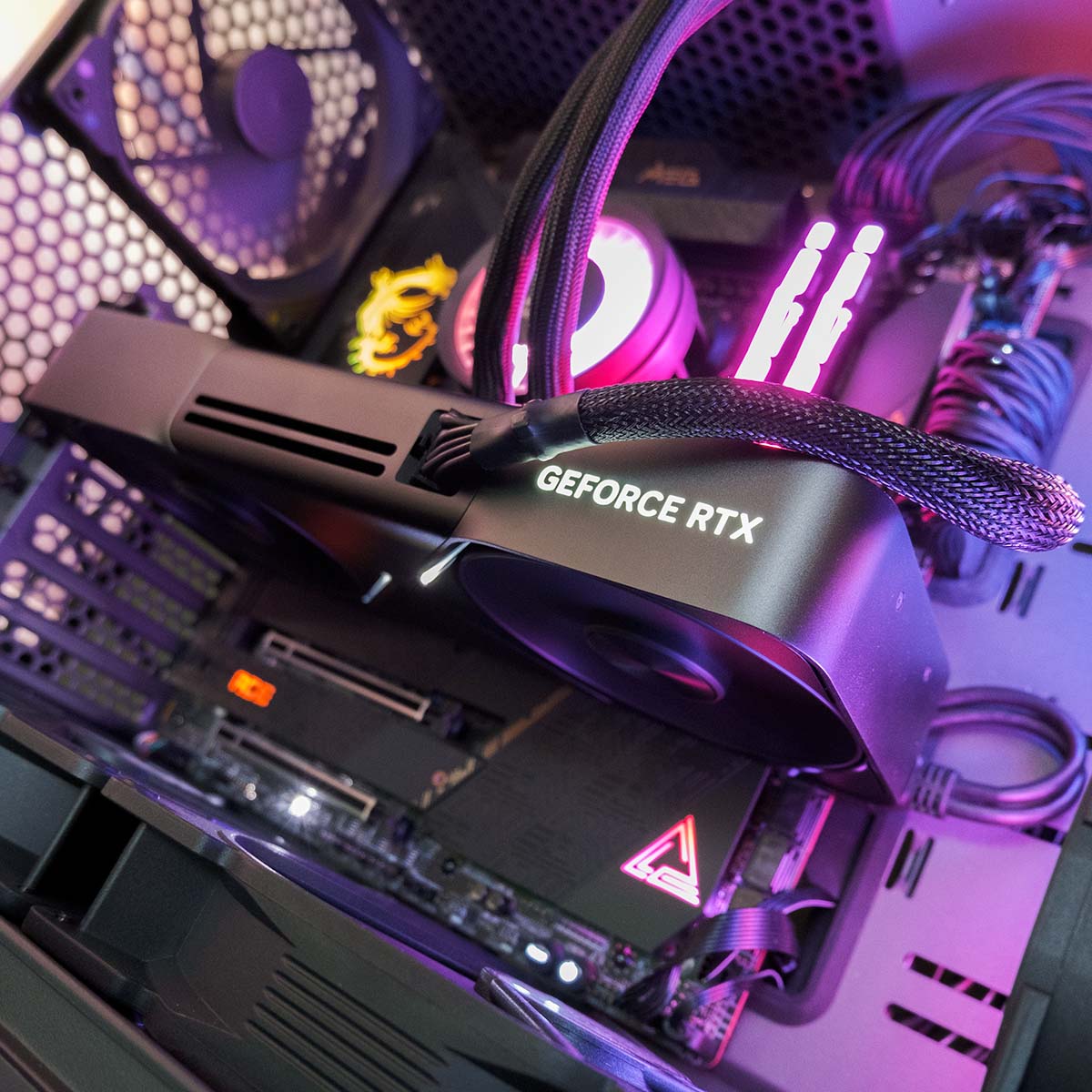
Club386 Test PCs
Club386 carefully chooses each component in a test bench to best suit the review at hand. When you view our benchmarks, you’re not just getting an opinion, but the results of rigorous testing carried out using hardware we trust.
Shop Club386 test platform components:
Motherboard: MSI MEG X670E ACE
Cooler: Arctic Liquid Freezer III 420 A-RGB
GPU: Nvidia GeForce RTX 5090 FE
Memory: 64GB Kingston Fury Beast DDR5
Storage: 2TB WD_Black SN850X NVMe SSD
PSU: be quiet! Dark Power Pro 13 1,300W
Chassis: Fractal Design Torrent Grey
Changing over to Ryzen 7 9800X3D is no bother for my test system. It’s all done in about 10 minutes thanks to AM5 compatibility between generations. What follows is a direct comparison with the PC accommodating either processor, back to back.
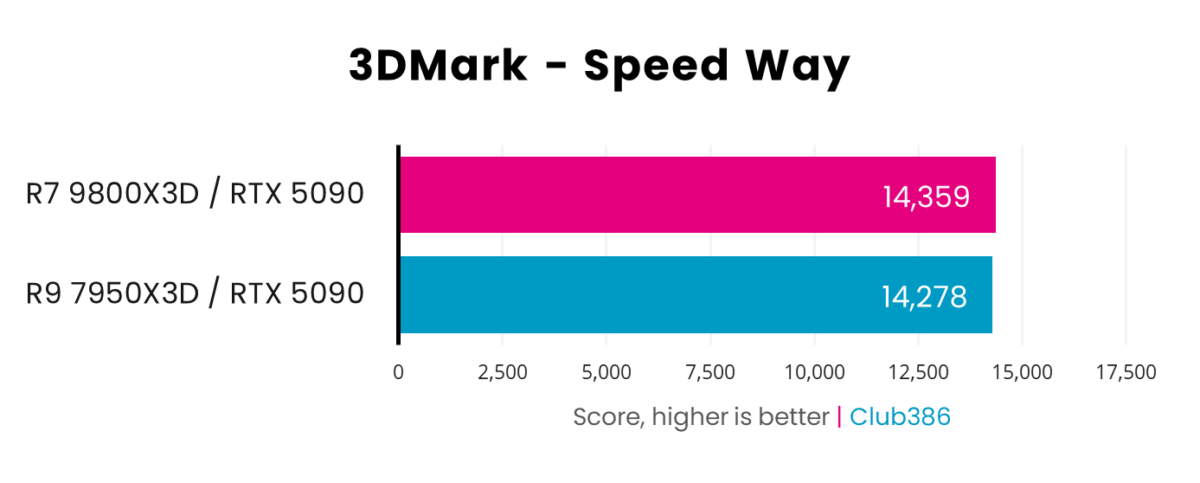
There’s a small, consistent increase for Ryzen 7 9800X3D in 3DMark Speed Way. Usually considered a GPU-bound test, it shows that if every last drop of performance counts, the CPU needs factoring into the overall equation.
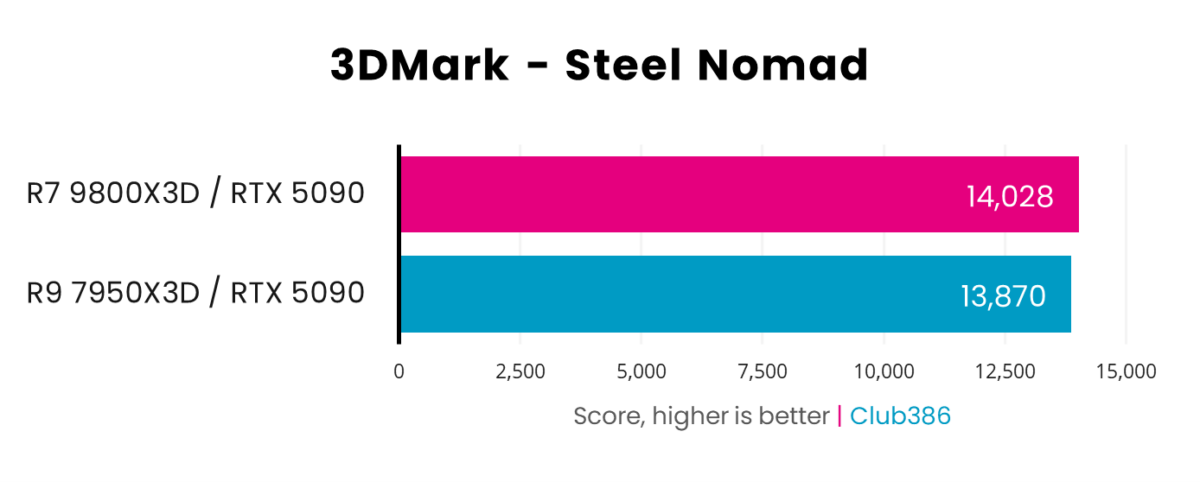
3DMark Steel Nomad is a rasterisation workload. I’m seeing a gain of just over 1%. Not much, granted, but it’s hard to go faster when every component is already premium in nature.
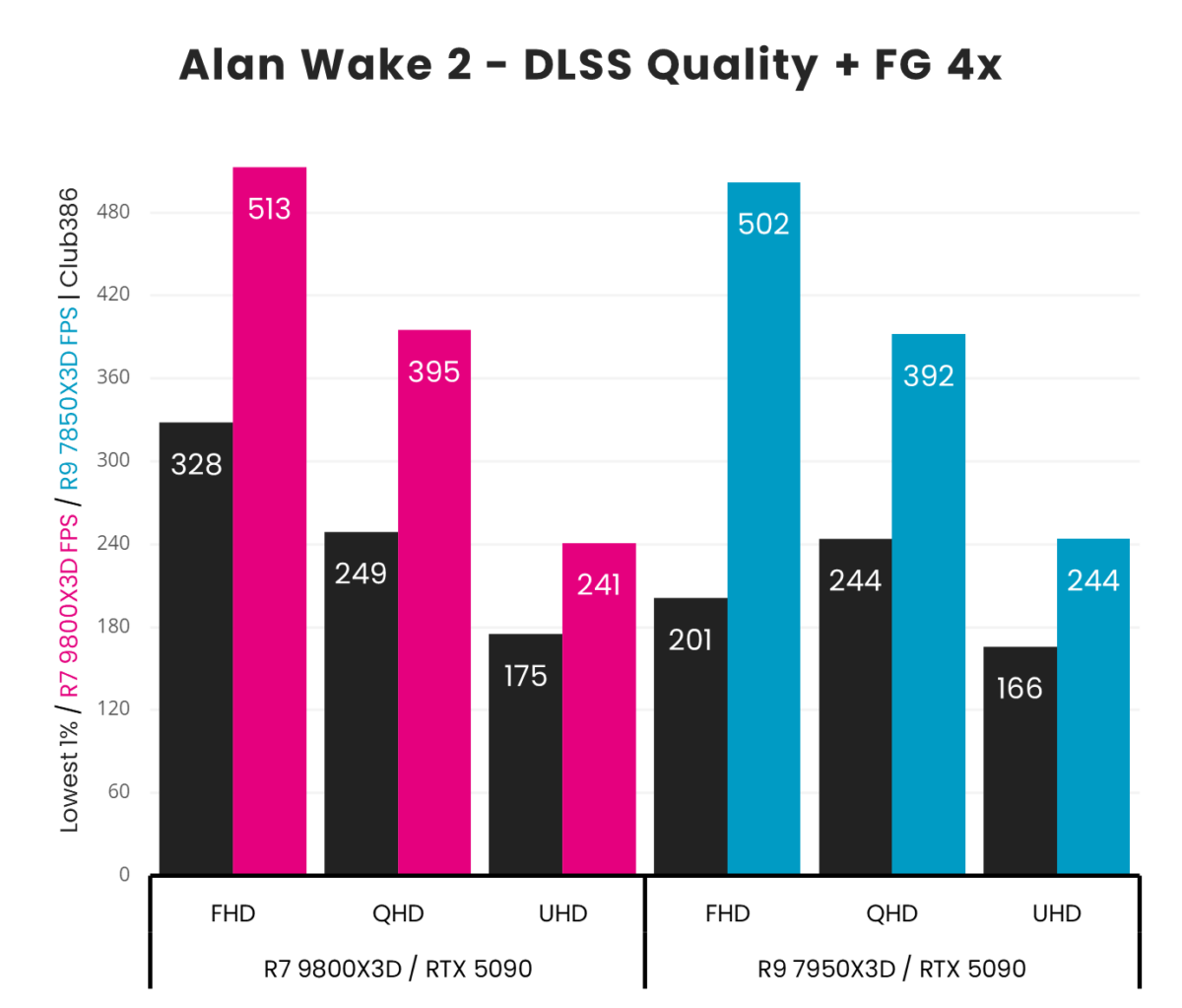
Nvidia makes loud noises about how Multi Frame Generation (MFG) is the must-have feature this time around. Performance at 4x – so one raster frame followed by three generated by AI – is already startling with Ryzen 9 7950X3D, though it’s interesting that Ryzen 7 9800X3D not only increases averages a touch, but one also enjoys comfortably higher minimum frame rates across the board. When fps is this high, it’s the lows that matter most.
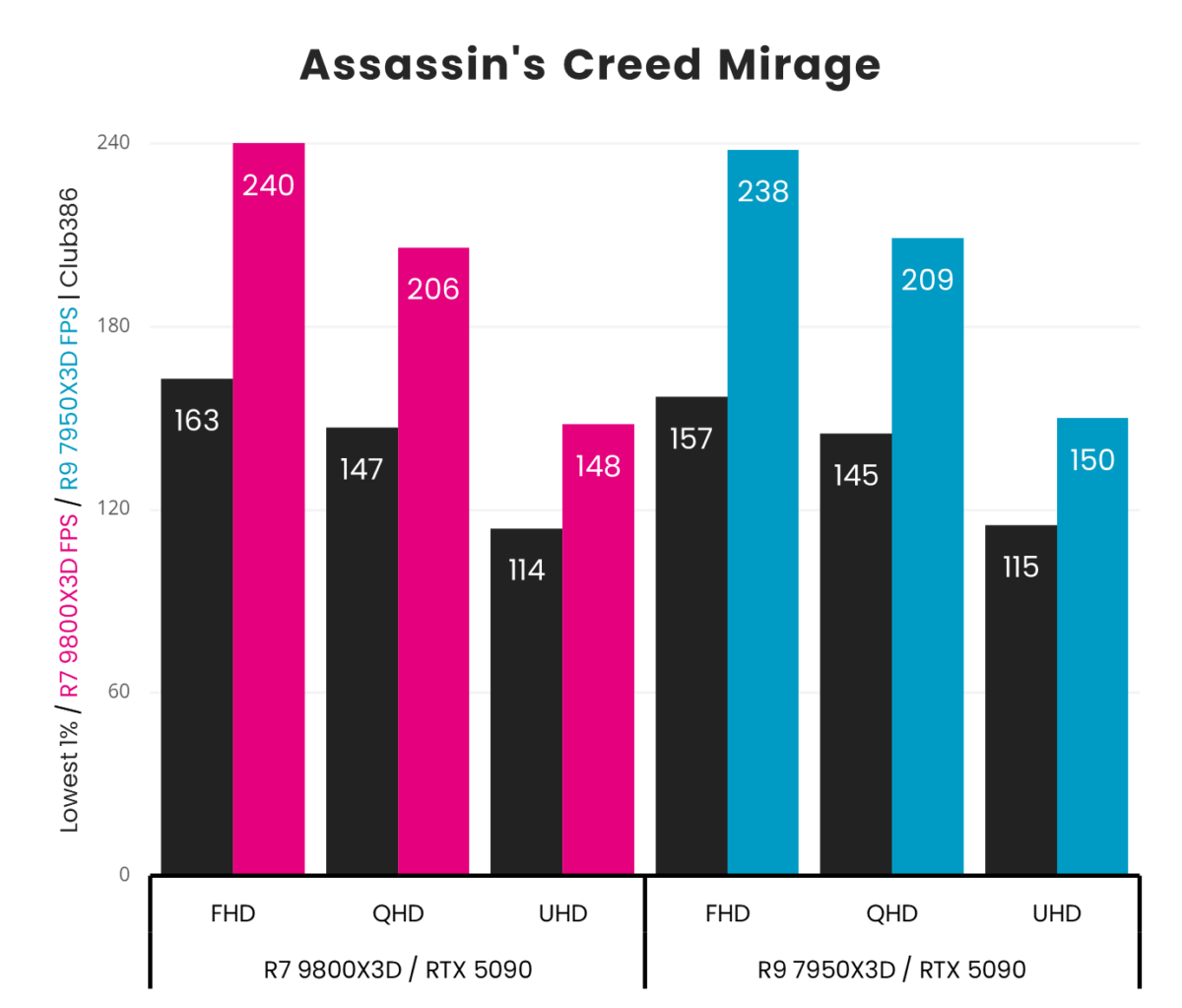
Switching gears back to regular rasterisation in Assassin’s Creed Mirage, it’s a case of six of one and half a dozen of the other. Ryzen 7 9800X3D offers a smidge more performance at FHD but, somewhat strangely, falls behind at QHD and UHD resolutions.
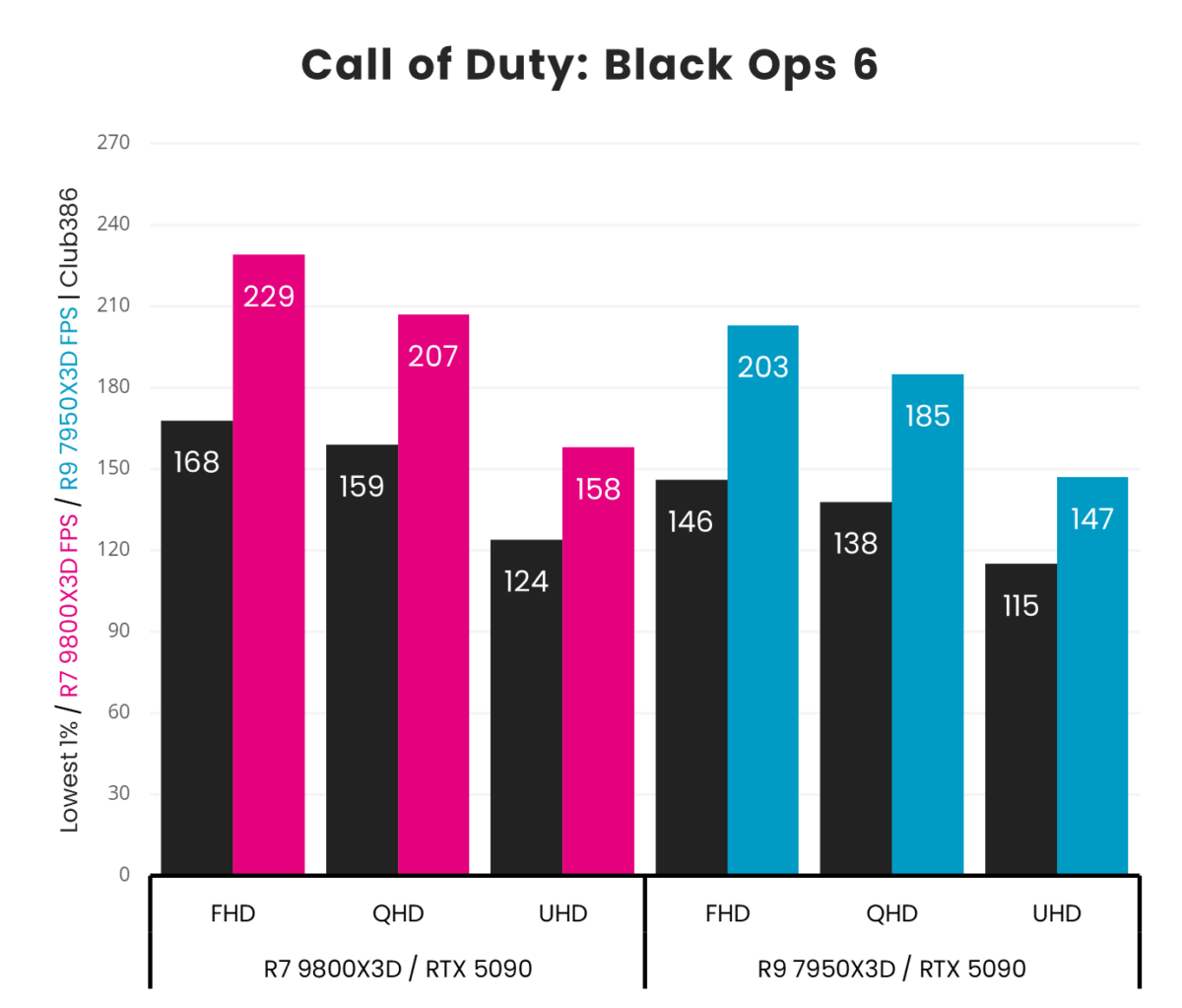
Here’s something interesting. Double checking I’m using the same settings, Ryzen 7 9800X3D has demonstrably better numbers at each resolution.
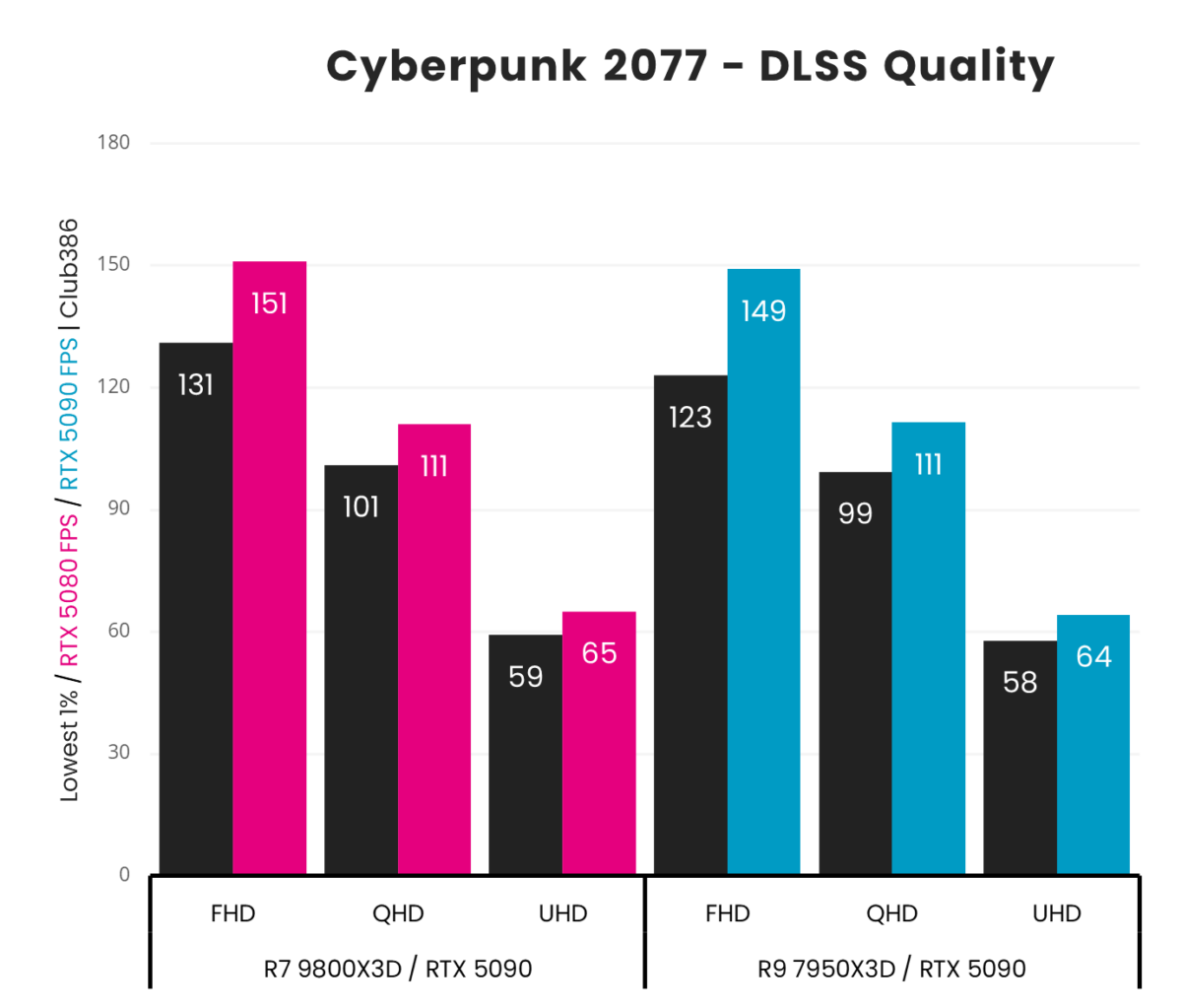
I’m alternating between pure rasterisation, MFG, and general upscaling (DLSS Quality) to show you how different game engines respond to RTX 5090 and either premium CPU.
I’m liking the marginally higher average and minimum frame rates, but truth be told, you won’t notice a visual difference.
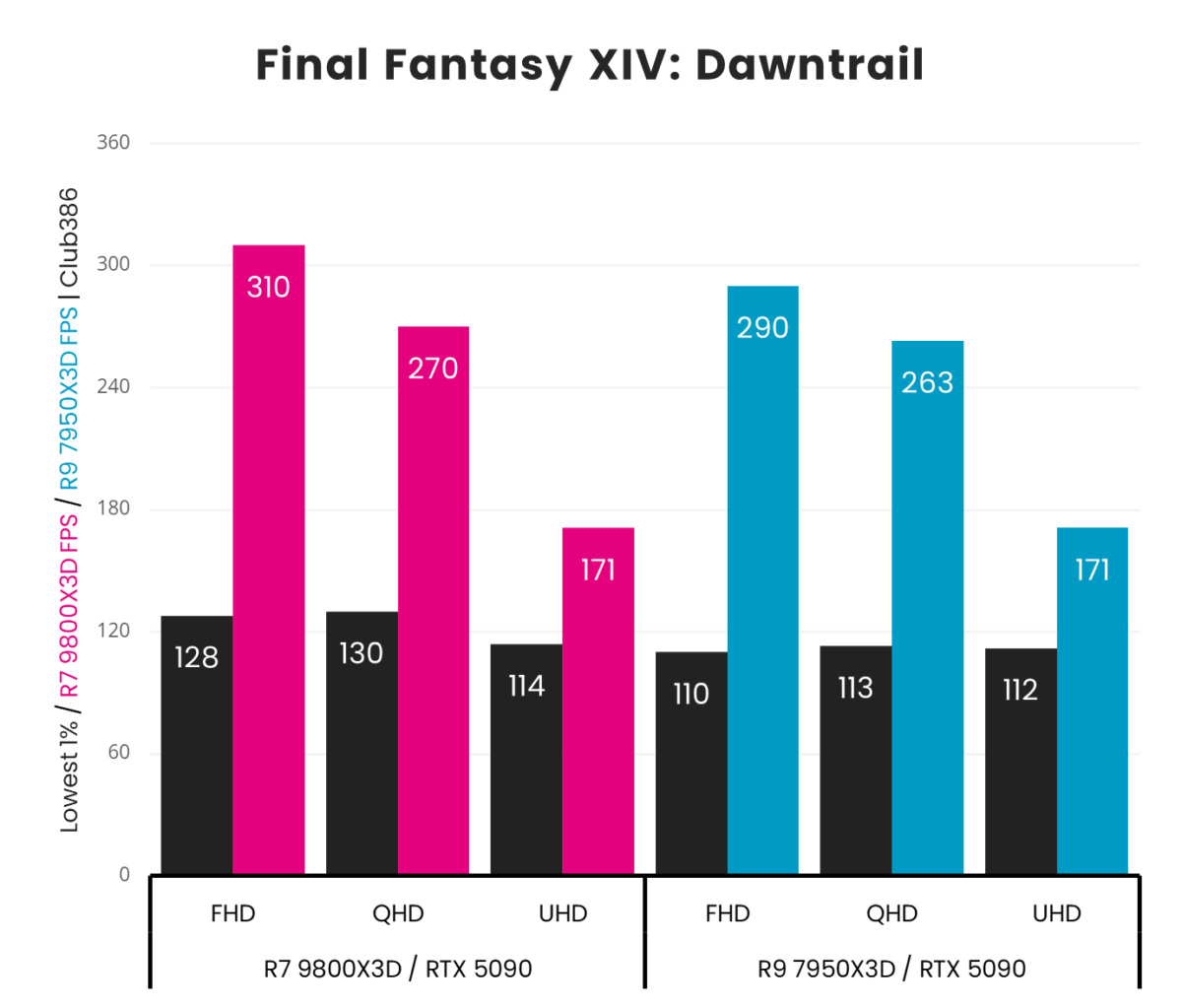
I know Final Fantasy XIV: Dawntrail is sensitive to choice of CPU and memory. Swapping out capable Ryzen 9 7950X3D for the newer chip nets me a really solid uptick in FHD and QHD frame rates along with a welcome bump in average fps. Seems like Ryzen 7 9800X3D is the way to go.
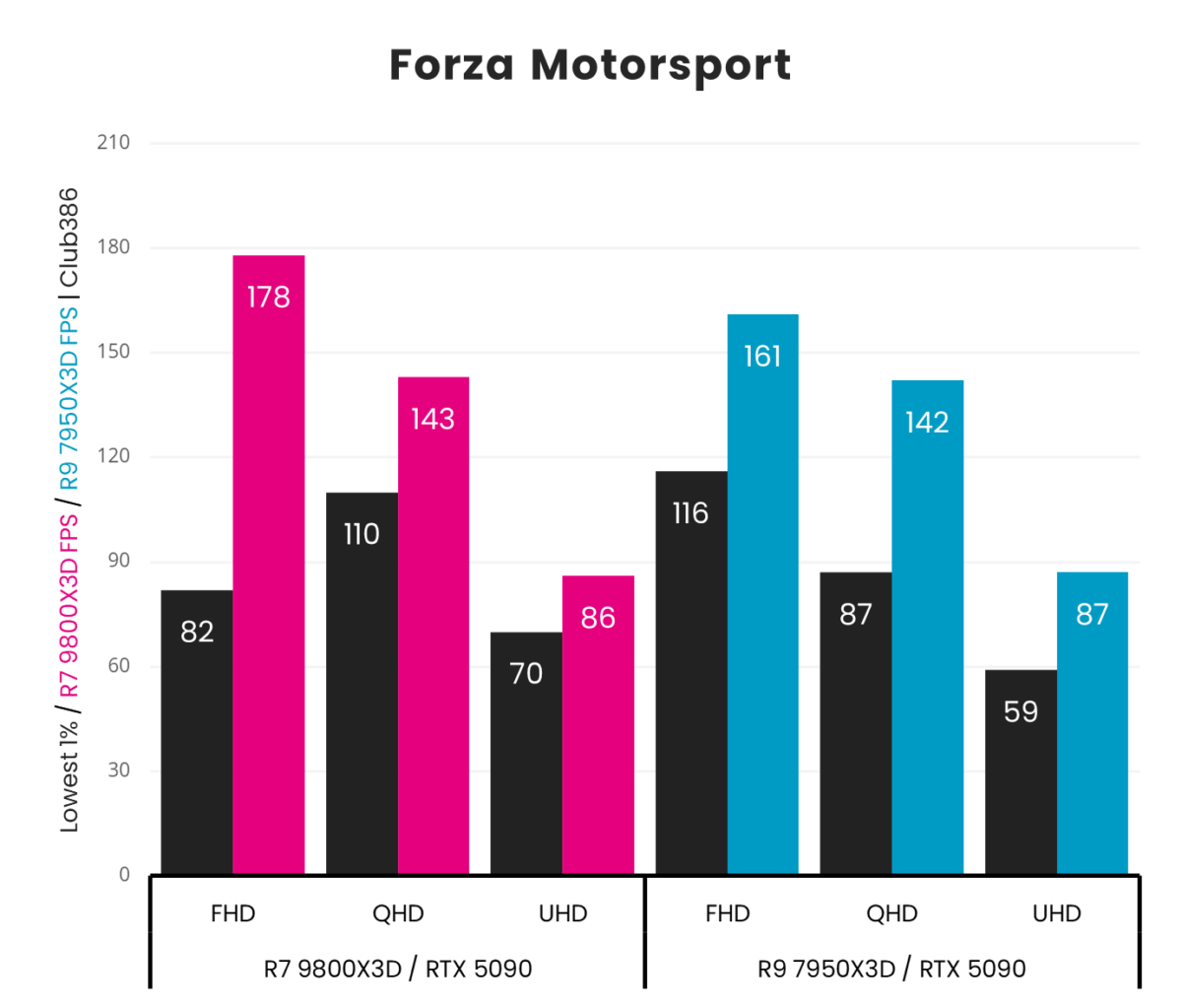
I’d expect to see largest performance deviations at FHD, where the subsystem plays the largest role in determining frame rate. Ryzen 7 9800X3D smashes it at this resolution, albeit with a strangely low minimum that’s consistent between multiple runs. Everything settles down at higher settings, of course, and I’m glad to see minimums remaining excellent at QHD and UHD.
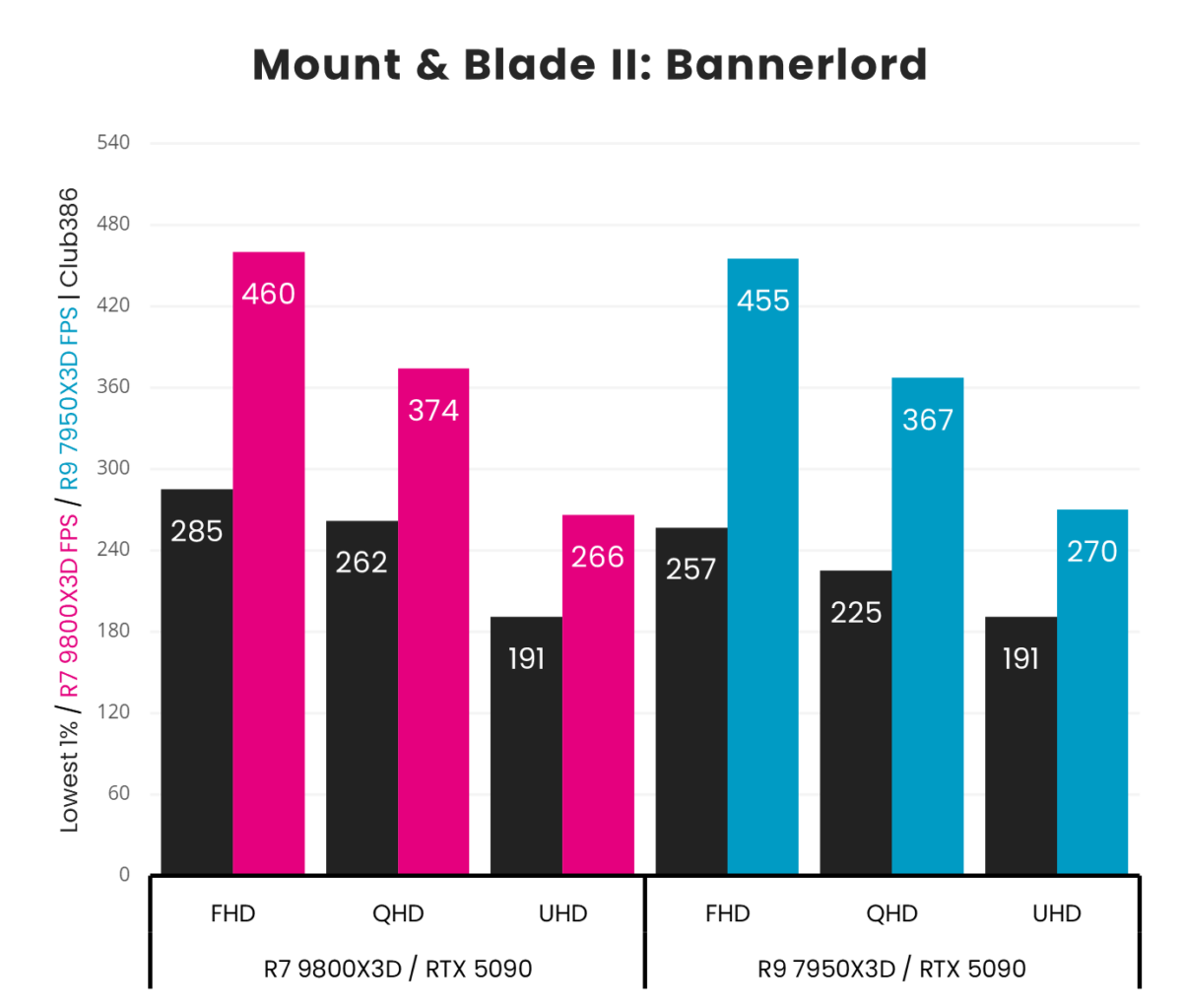
My key takeaway here is Ryzen 7 9800X3D is a particular boon for minimum frame rates. Whichever way you cut it, however, performance at 4K is astonishing when driven by either CPU.
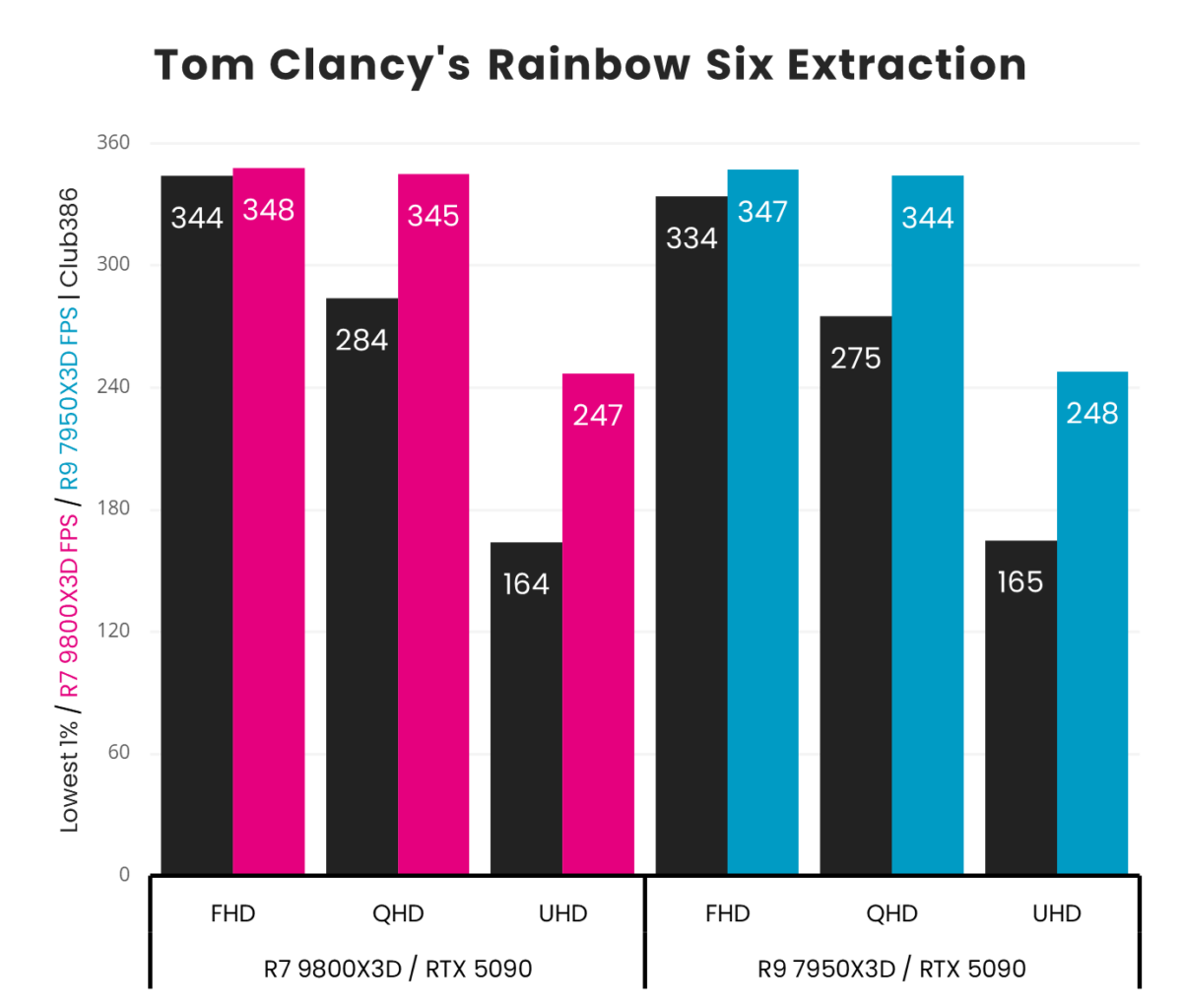
What’s a couple of fps between friends when you’re dealing with 250-350 to begin with?
Analysis
Looking at numbers again from eight games carrying disparate engines and running maximum quality settings with varying degrees of upscaling enhancement, it’s clear GeForce RTX 5090 is an incredibly powerful GPU made all the more lustrous if titles take advantage of MFG.
I certainly won’t scoff at performance when pushed along by a capable Ryzen 9 7950X3D – the numbers speak for themselves – yet people buying at this end of the market tend to spend big for very incremental gains. Swapping out to Ryzen 7 9800X3D provides a slight uplift in most games, particularly at lower resolutions, and the key focus is on increases in minimum frame rate rather than large boosts to average. Considered in that context, I advise fps chasers to opt for the latest incarnation of X3D technology.
It’s no secret dual-CCD Ryzen 9 9950X3D is on the horizon, and I’d wager you’ll see similar gains as demonstrated here. I’ll answer whether it’s a better gaming chip than Ryzen 7 9800X3D as soon as AMD is feeling generous enough to give me one.
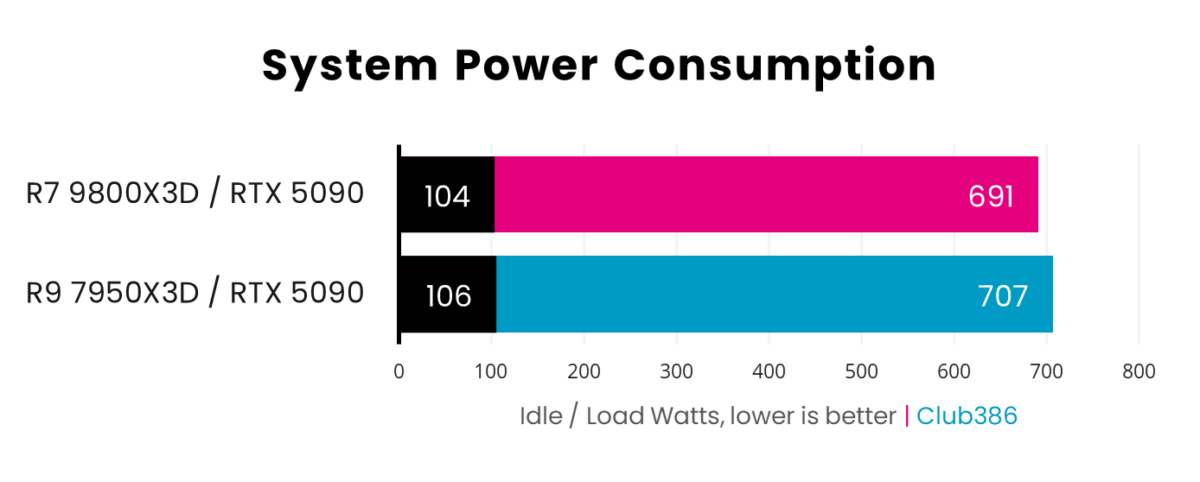
Evaluated in Alan Wake 2, lighting up fewer CPU cores has a small benefit for system-wide power consumption. Yet running this type of machine isn’t cheap. Game four hours a day, every day, costs around £250 of electricity per year over here in the UK.
Conclusion
The absolute weapon that is GeForce RTX 5090 lords it over all other graphics cards. Coming in around 30% quicker than previous champ RTX 4090 in rasterisation and DLSS, rising to twice as fast with MFG locked and loaded, it represents a step-change in pushing pixels. It’s the first time I feel comfortable in maximising a 4K240 OLED monitor.
Choosing the right CPU to pair with the monster is relatively straightforward once you settle on X3D technology from AMD. These chips carry extra on-board cache to help with pushing data to the GPU, meaning they’re primed to get the most out of it. But not all X3Ds are created equal. Latest-generation Ryzen 7 9800X3D has already proven wildly popular with gamers and it’s easy to see why.
There’s enough innate horsepower for propelling GeForce RTX 5090 to even higher heights. Furthermore, I’m pleased with how the chip helps elevate minimum frame rates in many gaming scenarios. If £650 Ryzen 9 7950X3D is good for gaming, £450 Ryzen 7 9800X3D is great.
You’ll need fortune on your side to purchase both chip and GPU at reasonable prices in the coming weeks, but if you can, there’s no better way to start that luxurious build of 2025.
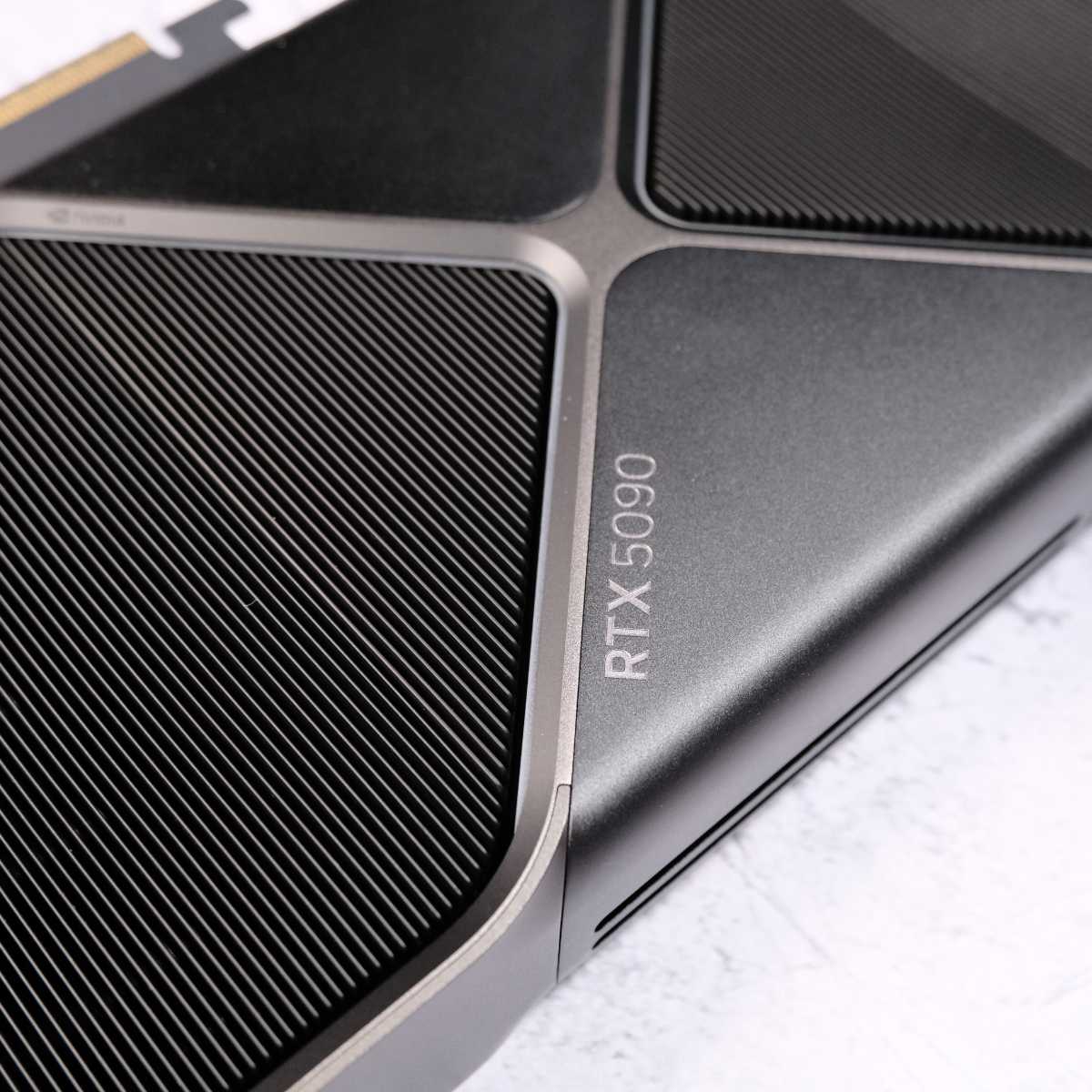
GeForce RTX 5090
“GeForce RTX 5090 is the absolute pinnacle of PC gaming. If you can afford it, just go right ahead and buy one.” Read our review.
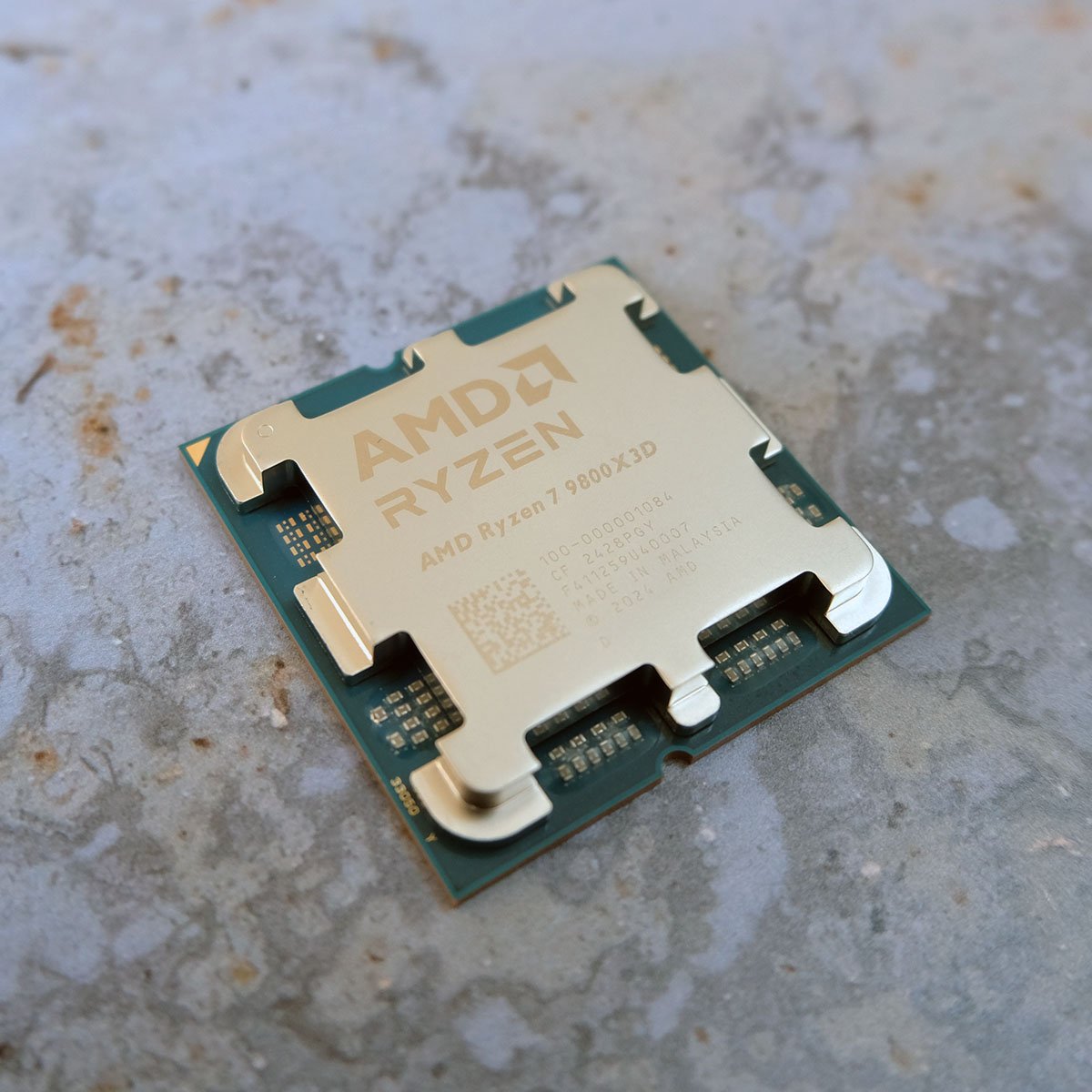
AMD Ryzen 7 9800X3D
The fastest gaming chip on the market, Ryzen 7 9800X3D stakes an enviable claim to be in your next system build. Read our review.
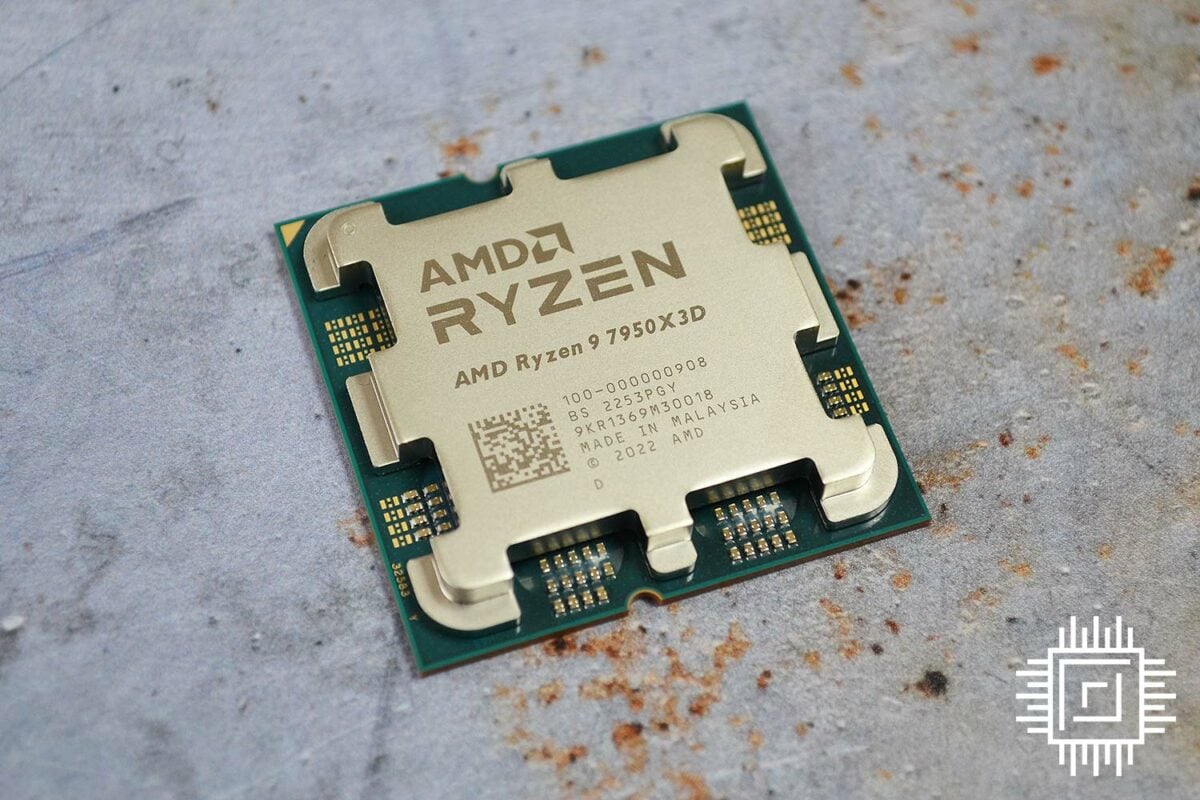
AMD Ryzen 9 7950X3D
Performance-boosting X3D cache comes to the Ryzen 7000 Series. A great choice for gamers who value every fps. Read our review.


